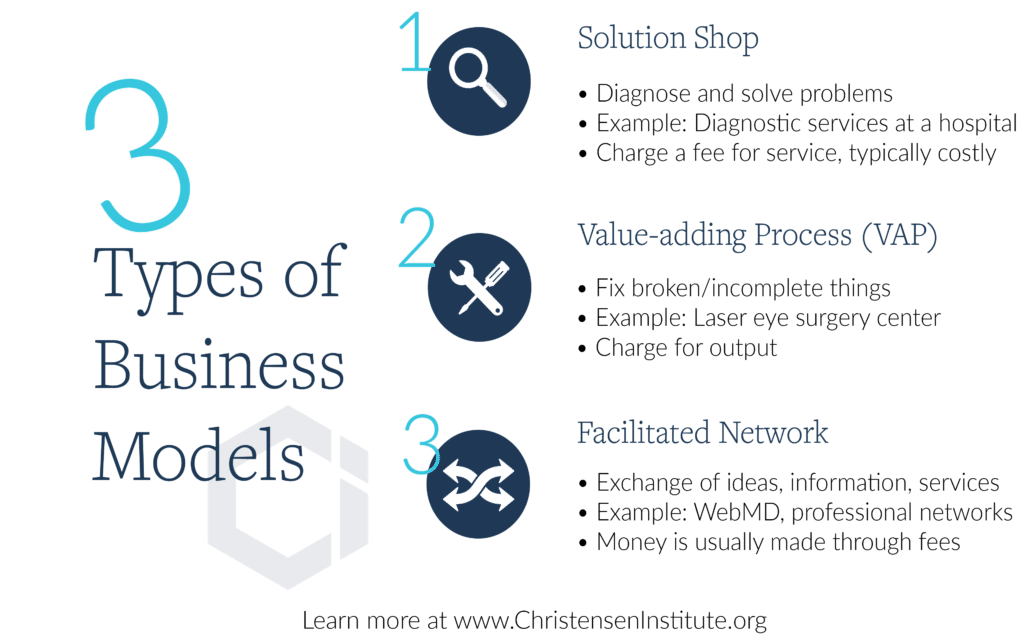When the theory of disruptive innovation was first developed, the words innovation and technology were used interchangeably. Today, we distinguish technology as any process that generates products and services of greater value than before, and recognize that technology is just one component that makes an innovation—particularly a disruptive innovation. For an innovation to succeed in being disruptive, a coherent value network and innovative business model are equally important.
But what do innovative business models look like? In The Innovator’s Prescription, Clayton Christensen, Harvard Business School professor and architect of disruptive innovation, explains that there are three types of business models, each which serves a different purpose.
Solution shops are designed to diagnose and solve unstructured problems, and their value derives from the experts they employ. Research and development organizations, as well as the diagnostic work performed in general hospitals, are examples of solution shops in healthcare. However, recommending solutions to complicated problems is as far as they go. In their purest form, they aren’t structured to act on their recommendations—that task belongs to value-adding process businesses (VAP). VAP businesses—think of laser eye surgery centers—take broken or incomplete things and add value to them. Many medical procedures that occur after definitive diagnosis, then, are considered value-adding processes. Lastly, facilitated networks enable people to exchange ideas, information, and services with one another. Health insurance companies are an example; members deposit funds into a shared pool, and take claims out of it when they receive care from networked providers. Online support communities like ParkinsonNet and WebMD are other examples since both connect patients with specialists.
In healthcare, these models have regrettably been mixed together. General hospitals and physicians’ practices that once acted as solution shops now include value-adding processes and facilitated networks, resulting in overly complex institutions and high overhead costs. For each model to function properly, each must be separated in as pure a way as possible. Only then will healthcare costs decrease in a meaningful way.



